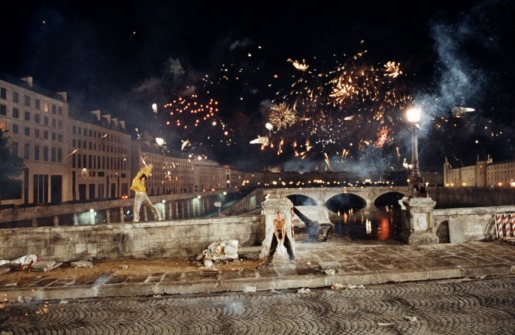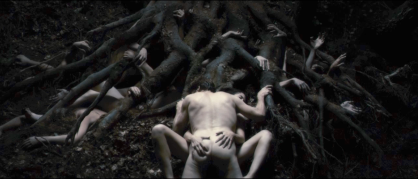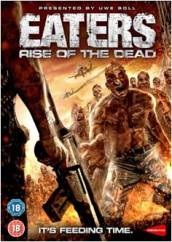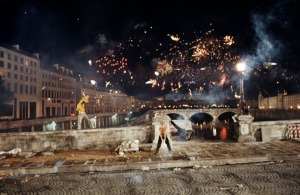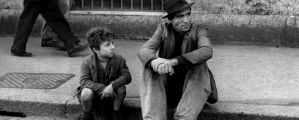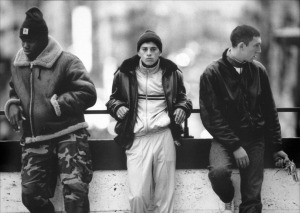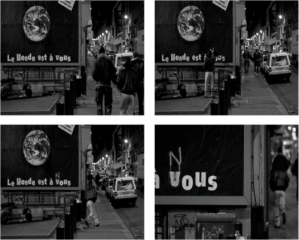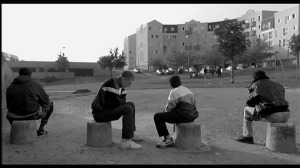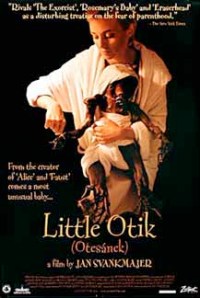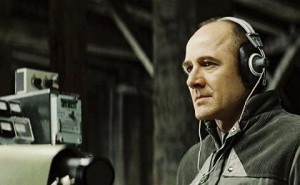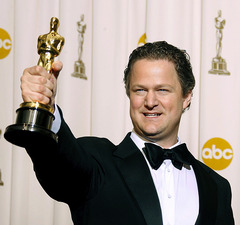Cinema du look has been heavily criticised for regarding spectacle over narrative and is often seen as celebrating artificiality, as the antagonist to the French New Wave it is a movement that employs studio shooting and favours high production values. In the case of Leos Carax’s Les Amants du pont-neuf (1991) it can be argued that the element of spectacle is of the utmost importance, therefore aligning itself in the cinema du look movement. A movement that has a tendency to foreground light, colour, and sound, Cinema du look is typified in the sequence where the two main characters are dancing on the bridge. This visually breathtaking scene is a combination of the excessive fireworks in the background, the rippling yellow shirt of Juliette Binoche and music that overwhelms you into a state of euphoria, clearly such a captivating sequence depicts the preference of spectacle over narrative.
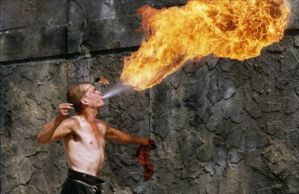 However, due to his history and origins within Cahiers Du Cinema and the resulting connections with the French New Wave, it is argued that Leos Carax is more alike to Godard than perhaps Luc Besson (one of the main directors of the Cinema du look movement). It is pointed out by ‘Cahiers’ themselves that Carax is working in tradition to Jean-Luc Godard, for example Carax gives his actors their lines the day before shooting (just as Godard does) and also appeared as Edgar in Godard’s King Lear (1987). Writing about Carax’s time working with Cahiers du Cinema, Christian Checa Banuz says: “He began his career in film criticism with a very positive review of Sylvester Stallone’s debut as a director, Paradise Alley (1978), which in itself revealed something of Carax’s particular vision, a special feeling of urgency he was demanding from cinema and filmmakers – an embryonic version of the “smile of speed.” (2006, para. 3).
However, due to his history and origins within Cahiers Du Cinema and the resulting connections with the French New Wave, it is argued that Leos Carax is more alike to Godard than perhaps Luc Besson (one of the main directors of the Cinema du look movement). It is pointed out by ‘Cahiers’ themselves that Carax is working in tradition to Jean-Luc Godard, for example Carax gives his actors their lines the day before shooting (just as Godard does) and also appeared as Edgar in Godard’s King Lear (1987). Writing about Carax’s time working with Cahiers du Cinema, Christian Checa Banuz says: “He began his career in film criticism with a very positive review of Sylvester Stallone’s debut as a director, Paradise Alley (1978), which in itself revealed something of Carax’s particular vision, a special feeling of urgency he was demanding from cinema and filmmakers – an embryonic version of the “smile of speed.” (2006, para. 3).
“My dreams sent me. People in dreams, ought to call them when you wake. Make life simpler. ‘Hello, dreamed of you. Love woke me'”
As a result it appears that Carax is a better fit to the ideologies of the French New Wave and the principles of Cahiers du Cinema, “In Challenging the viewer to reconsider certain preconceptions regarding cinema, narrative and the image, Carax’s films on occasion create the conditions forsomething like thinking otherwise” (Daly & Dowd, 2003, p.17). This displays how Carax isn’t only concerned with creating an aesthetically pleasing piece of work, also aiming to be thought provoking and encourage his audience to become more active viewers and to engage with his films. Furthermore, his directorial style shows his efforts to create a realist and authentic film: “Carax obliged his actors to spend several months living amongst the homeless in preparation for the shooting, for their performance has a stark authenticity that certain critics found disturbing.” (Powrie, 2006, p. 207). This way of directing in order to create a more realistic semblance appears vastly similar to the ways in which Jean-Luc Godard made his films, which highlights once again the fact that Carax has a greater connection with the French New Wave than Cinema du Look. Carax’s Les amants du pont-neuf
Bibliography
Carax, L. (Director). (1991). Les Amants Du Pont-Neuf. [Motion Picture]. France: Gaumont.
Checa Banuz, C. (2006, November). Leos Carax. Senses of Cinema (41). Retrieved from http://sensesofcinema.com/2006/great-directors/carax/#top
Daly, F., & Dowd, Garin. (2003). Leos Carax. Manchester: Manchester University Press.
Godard, J-L. (Director). (1987). King Lear. [Motion Picture]. United States: Cannon Films
Powrie, P. (2006). The Cinema of France. London: Wallflower Press.
Stallone, S. (Director). (1978). Paradise Alley. [Motion Picture]. United States: Universal Pictures.
